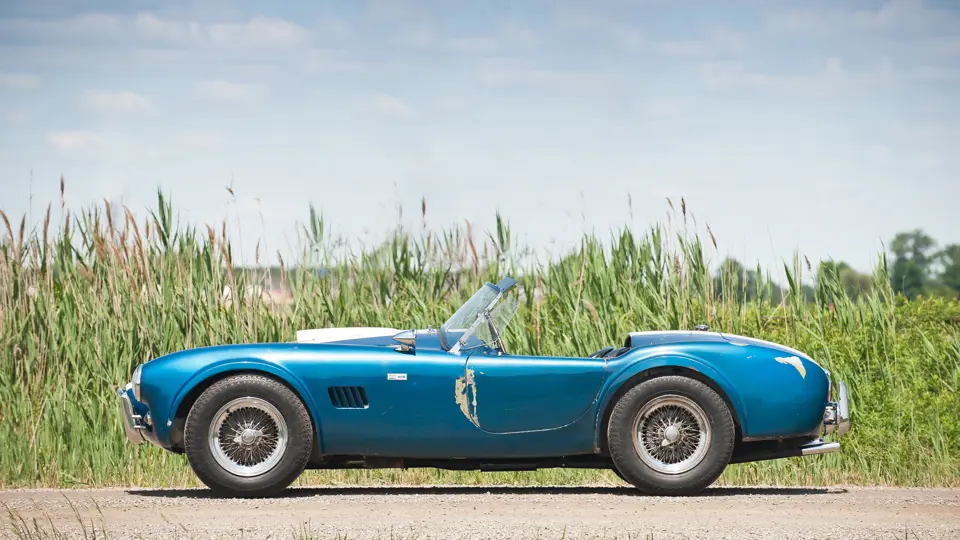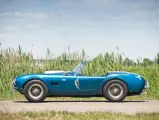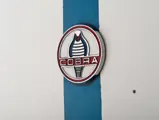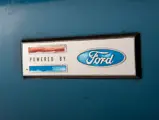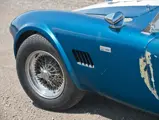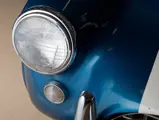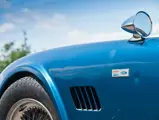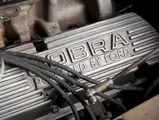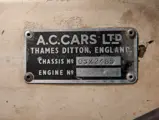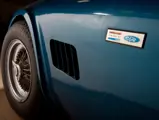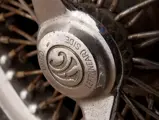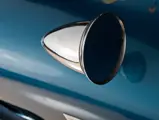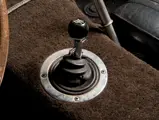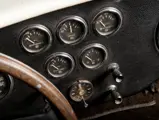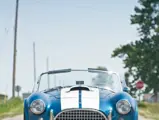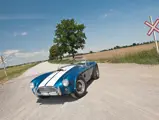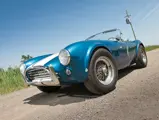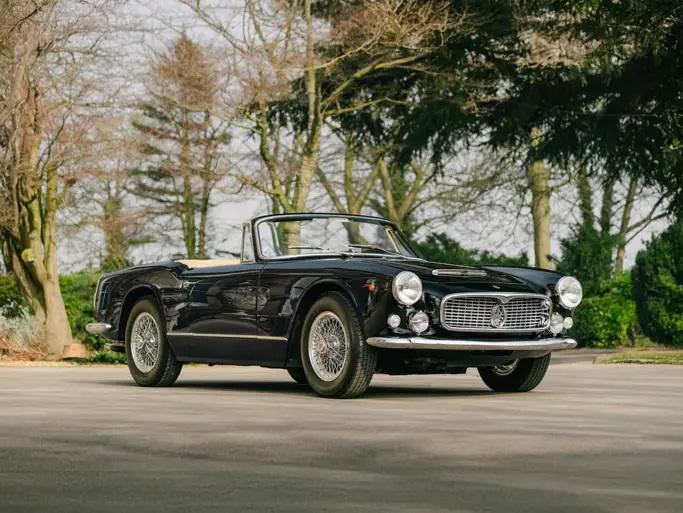Est. 271 bhp, 289 cu. in. V-8 engine, four-speed manual transmission, ladder-type steel tubing chassis with independent front and rear suspension via A-arms, transverse leaf springs and tubular shock absorbers, rack-and-pinion steering, and four-wheel hydraulic disc brakes. Wheelbase: 90"
- Remarkably original condition and lovely patina
- Documented in Shelby American World Registry
In 1960, American racing driver Carroll Shelby was diagnosed with a heart condition at the age of 37. After a successful eight-year career in motor racing that included a first overall for Aston Martin at the 1959 24 Hours of Le Mans, Shelby was forced to consider retirement.
Shelby’s self-enforced departure from racing was undoubtedly very difficult after a glamorous and high profile career in international motorsports. He initially ventured into wildcat oil drilling and even started a Texas trucking company. In 1961, he became Goodyear’s racing-tire distributor for the West Coast and formed a motor racing school at California’s Riverside Raceway. The financial successes of these projects allowed Shelby to pursue a long-held dream of building his own car.
The notion of producing a hybrid sports car was, at its core, quite simple. While British manufacturers retained the edge in styling, road holding and superb braking, American firms held a distinct horsepower advantage. This “best of both worlds” concept was, of course, nothing new. Postwar Allards, Cunninghams and Nash-Healeys used the same basic premise. Shelby, however, considered chassis from Austin-Healey, Jensen and Bristol before settling on AC after hearing that the builders of the stylish and sturdy Ace had lost their engine supplier when Bristol ceased production.
Attractive, lightweight and proven, the AC Ace could, by Shelby’s thinking, be turned into a successful production racer by replacing its aging six-cylinder engine with a powerful, deep-breathing V-8. In September 1961, Shelby wrote Charles Hurlock of AC Cars to propose a hybrid car using the AC sports car body and chassis. “I’m interested,” wrote Hurlock, “if a suitable V8 could be found.” Shelby moved quickly when editor Ray Brock of Hot Rod magazine told him of Ford’s new lightweight “small-block” V-8. Soon after, Shelby had an early 221-cubic inch example installed in a stock AC Ace. In fact, the V-8 weighed just slightly more than the six-cylinder Bristol.
Ford engineer Dave Evans then offered Shelby an even better solution. A high-performance 260-cubic inch V-8 was already in production for Ford’s Falcon, and two engines would be on the way to him soon. They were immediately sent by airfreight overseas, and on February 1, 1962, Carroll Shelby flew to England to test drive the new Shelby “Cobra.” The rest, as they say, is history!
CSX 2485
The 289 Cobra offered here, CSX 2485, is well documented in the Shelby American World Registry. It was shipped new to the United States aboard the SS Loch Avon in July 1964. Finished in white with a black interior, it was invoiced to George Briggs Motors of Defiance, Ohio with the Class “A” accessory package. Upon its arrival, Briggs’s General Manager F. William King wrote Shelby American, proclaiming, “interest thus far has been great and all that have looked at it or driven it are greatly enthused.”
The first private owners of record were Ralph Ormsby of Ohio and later Gerry Conner of Decatur, Georgia in the early 1970s. By 1974, the car is known to have been repainted Guardsman Blue and to have accumulated 34,000 miles. A man from Scarborough, Maine, who added white stripes, subsequently purchased it.
CSX 2485 was then returned to Georgia in 1977, as Jim Southard had purchased it after the SAAC-2 meeting in Hershey, Pennsylvania. By the mid-1980s, the car was in need of restoration and the noted marque expert Rand E. Bailey of Wisconsin was commissioned to authenticate the car and make it operable. As presented, CSX 2485 displays a lovely patina, representative of its well-known history.
It is still equipped with its original soft-top, Smiths heater and Stewart-Warner gauges, among many other original features. While the engine block is not original to the car, it is identical to the original unit, including the correct date codes, and is fitted with the original intake manifold, valve covers and oil pan. The car is currently fitted with period-correct wire-spoke wheels. As offered today, CSX 2485 is an outstanding candidate for complete restoration, or it can simply be preserved “as is.”
The 289 Cobra was unveiled nearly 50 years ago, and the rave reviews it received are as true today as ever. Sports Car Life described its acceleration as “explosive,” Car and Driver raved about its “hair-curling level of performance,” and Car Life declared it “a fox dropped among the chickens.” The Cobra remains a captivating Anglo-American hybrid and a sports car that has been highly sought after by collectors ever since. Countless examples have been meticulously restored to show quality, and it is therefore extraordinarily rare to present CSX 2485 in its remarkably original condition.
Built in 1964, this car is titled as a 1965.
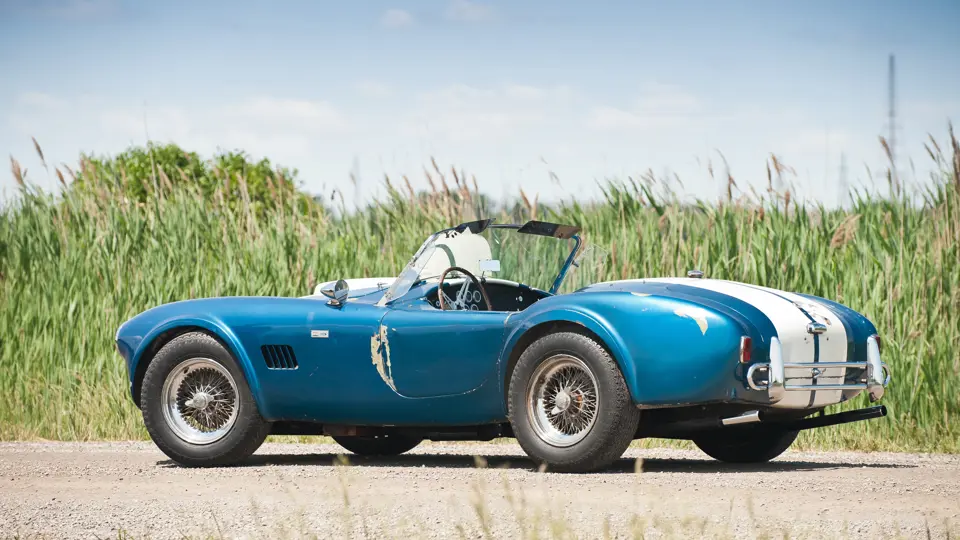



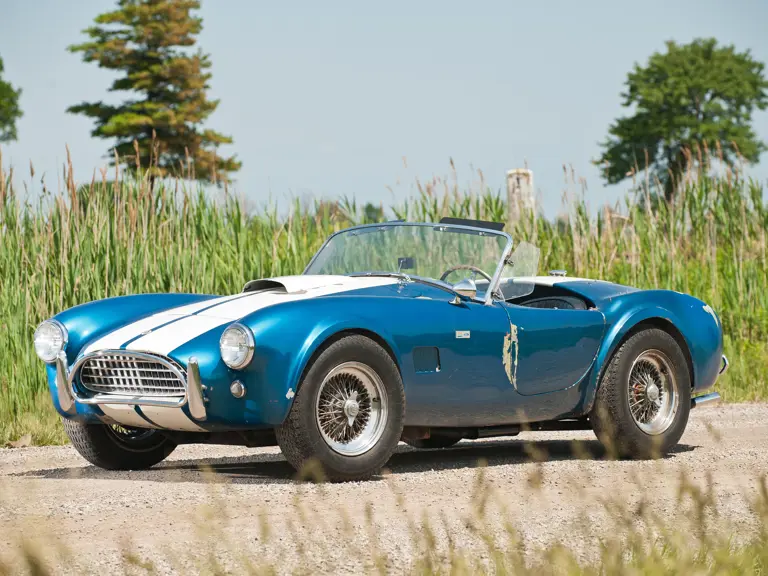
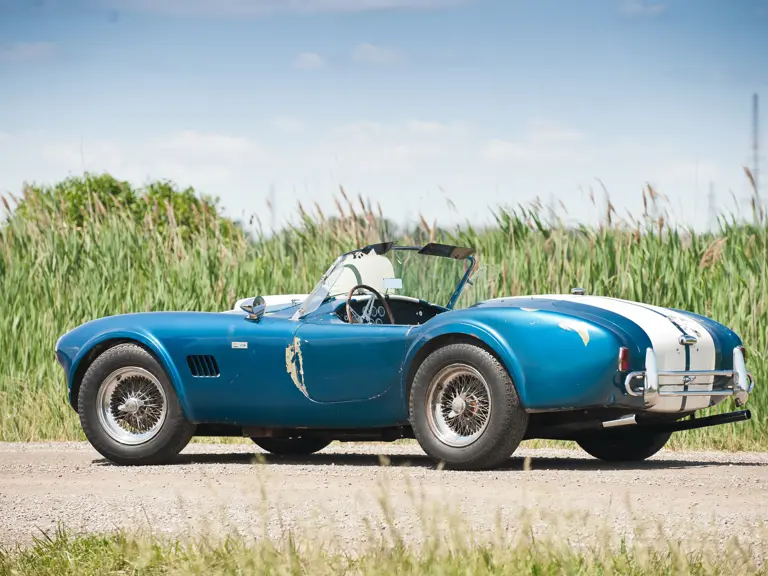
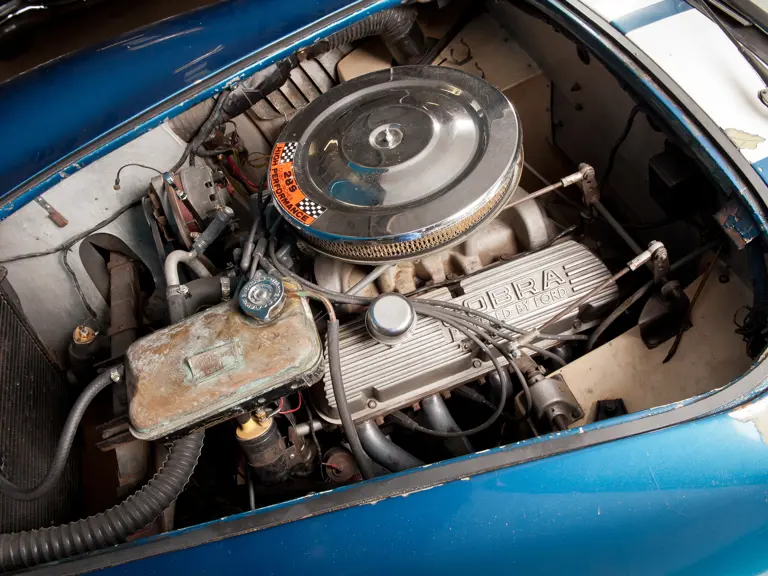
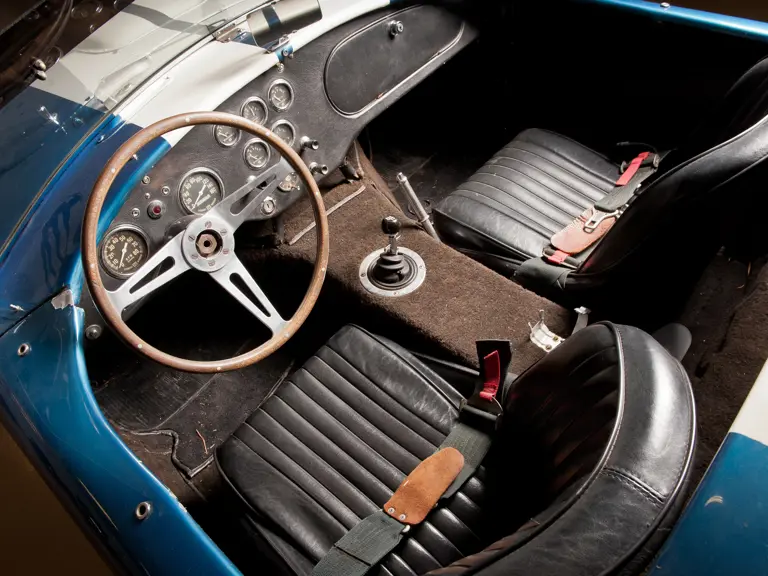
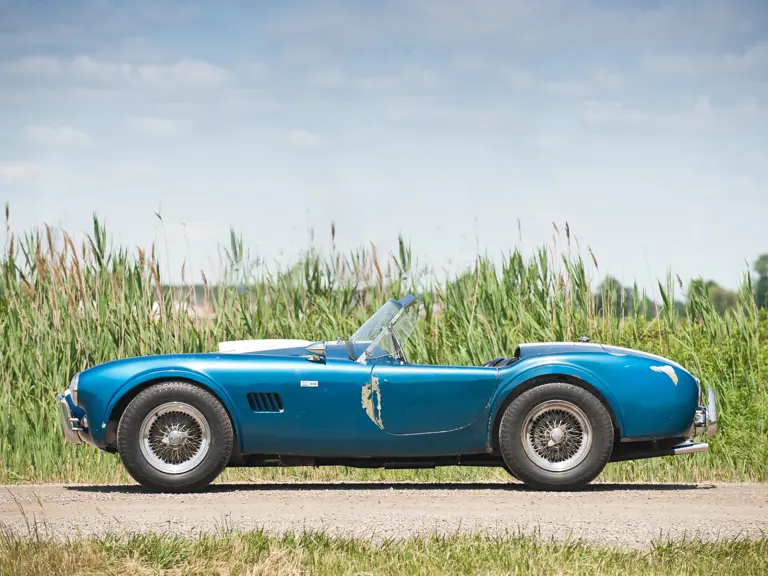

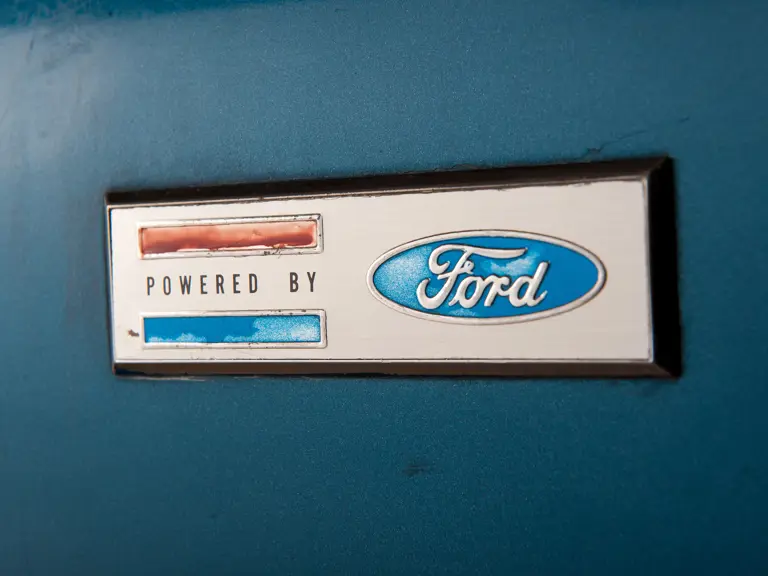
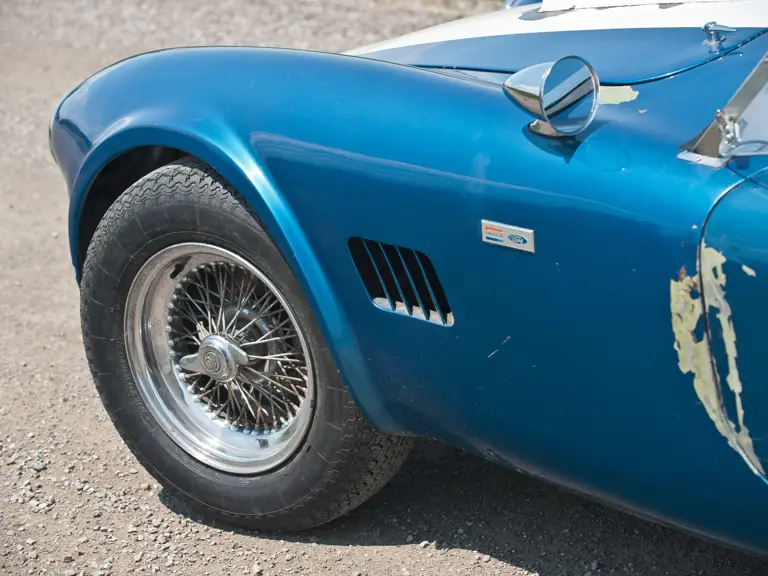
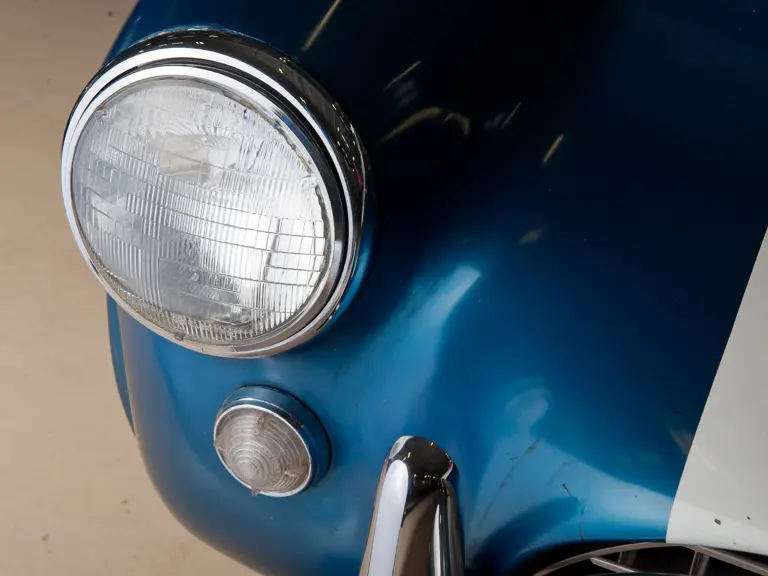
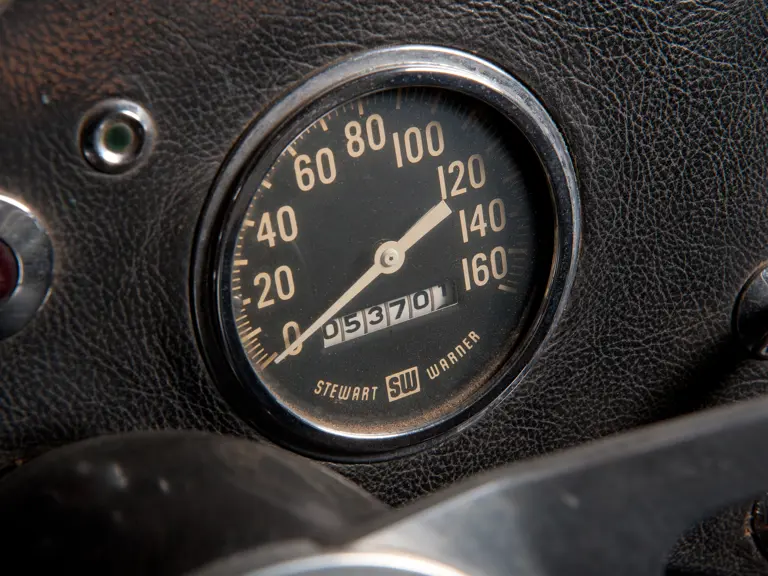
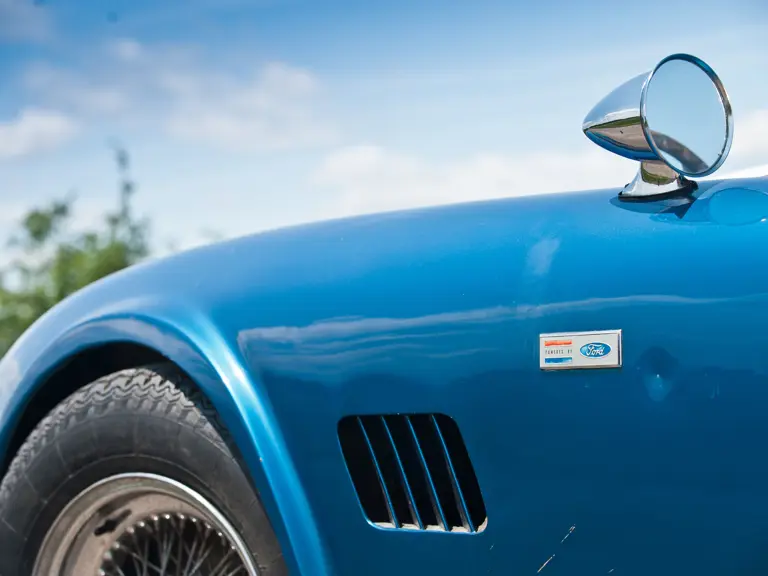
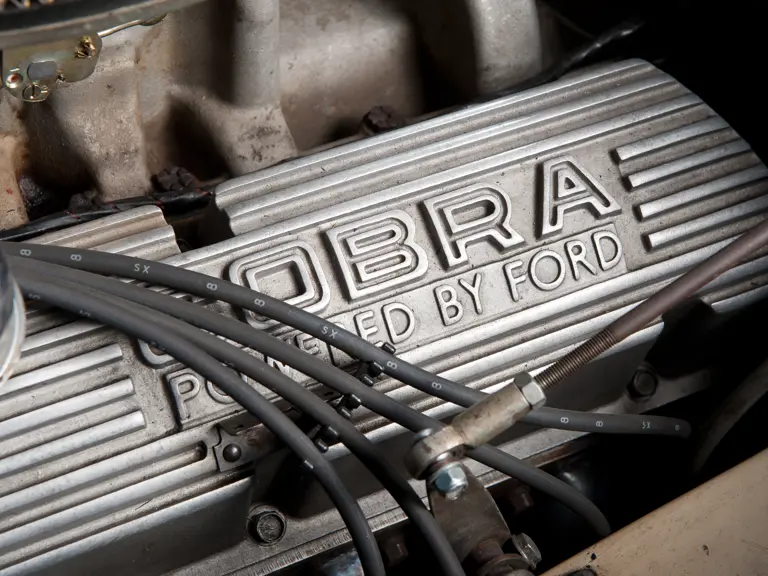

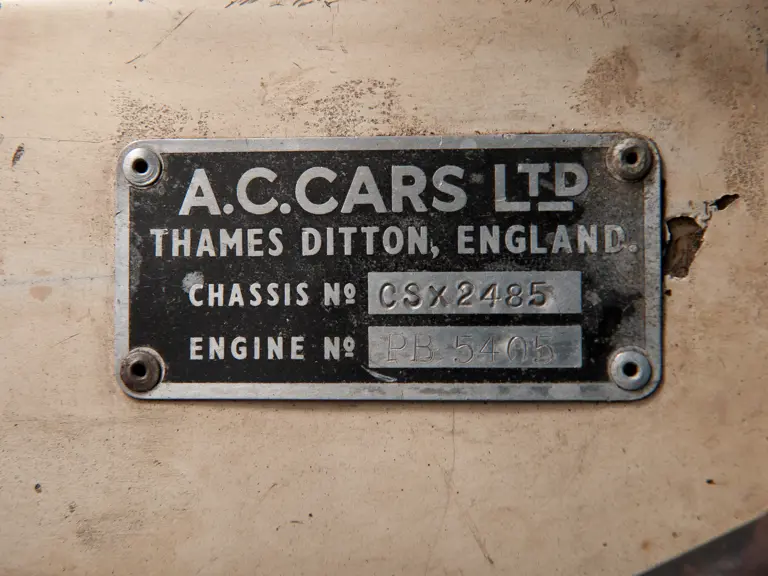
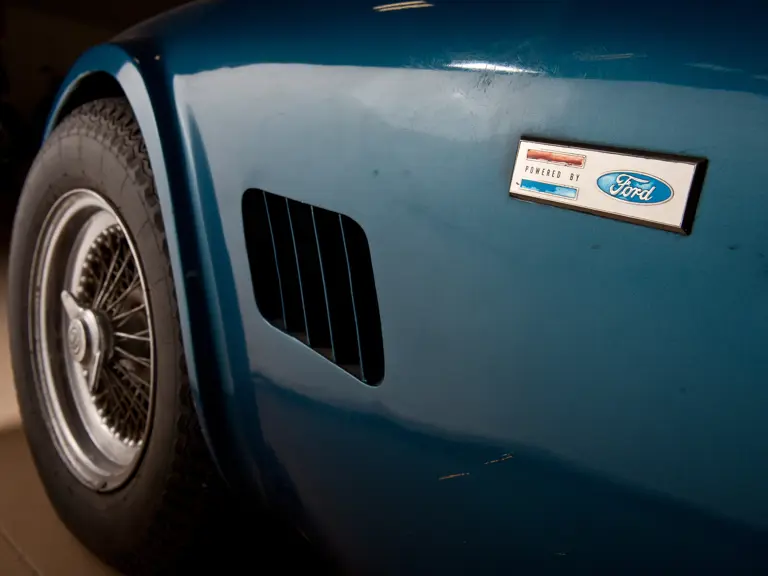

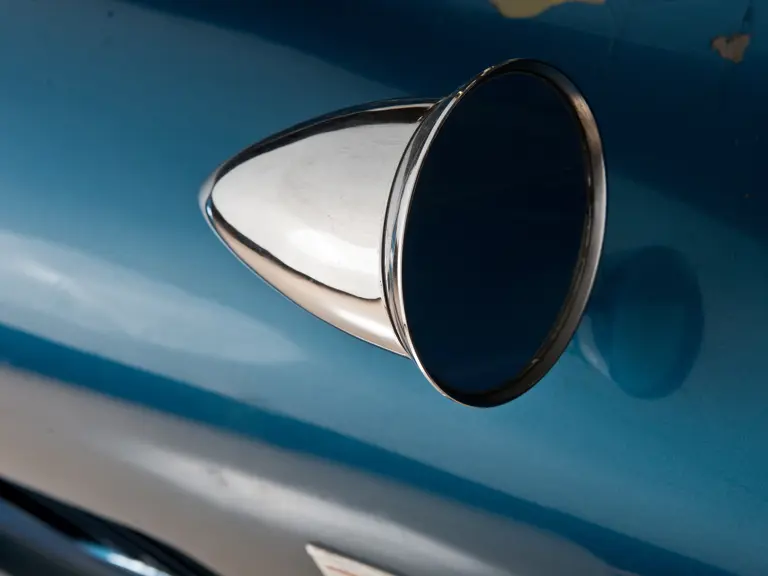
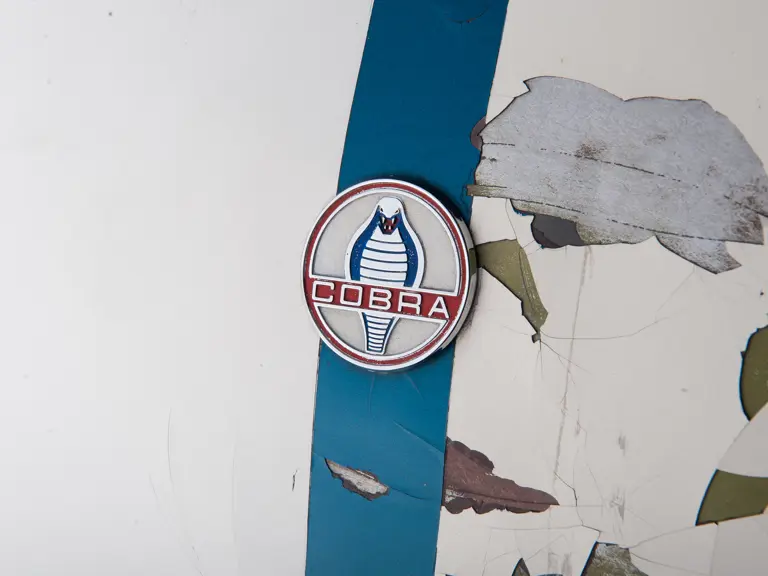
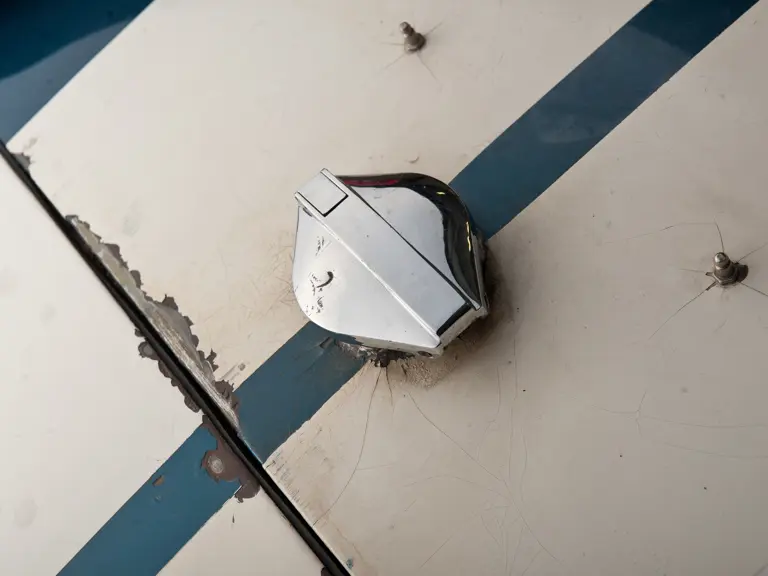
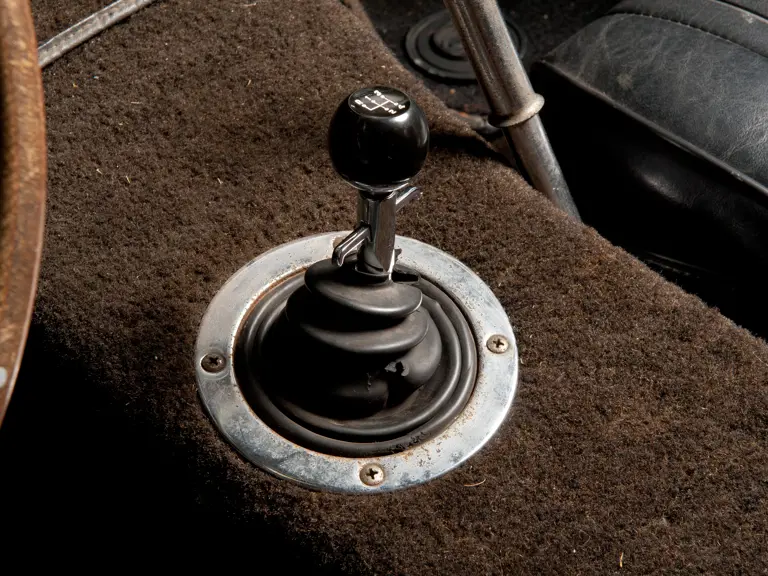
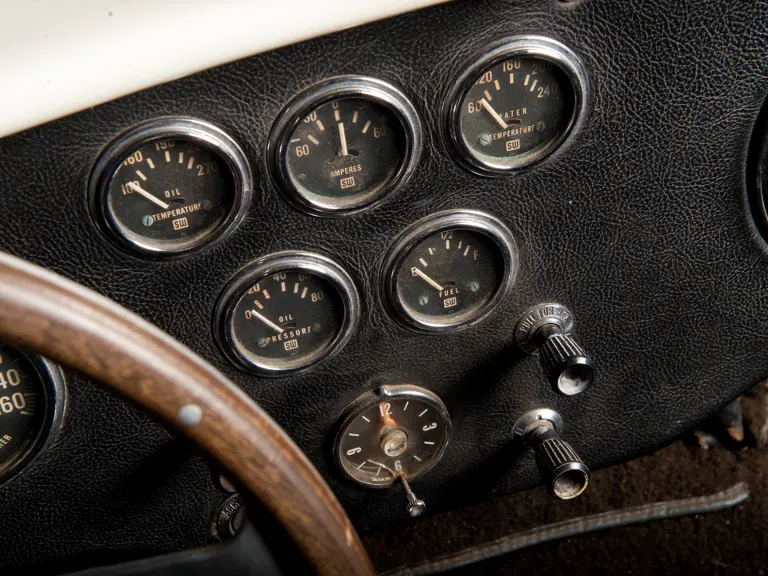
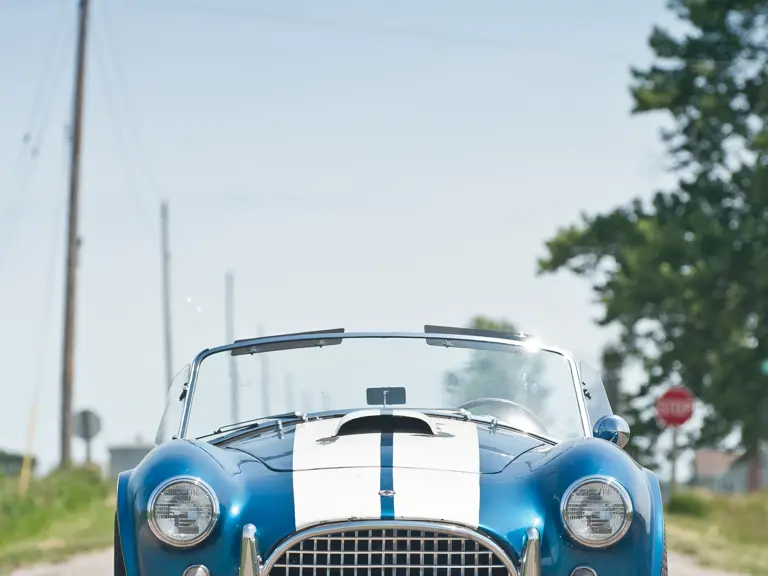
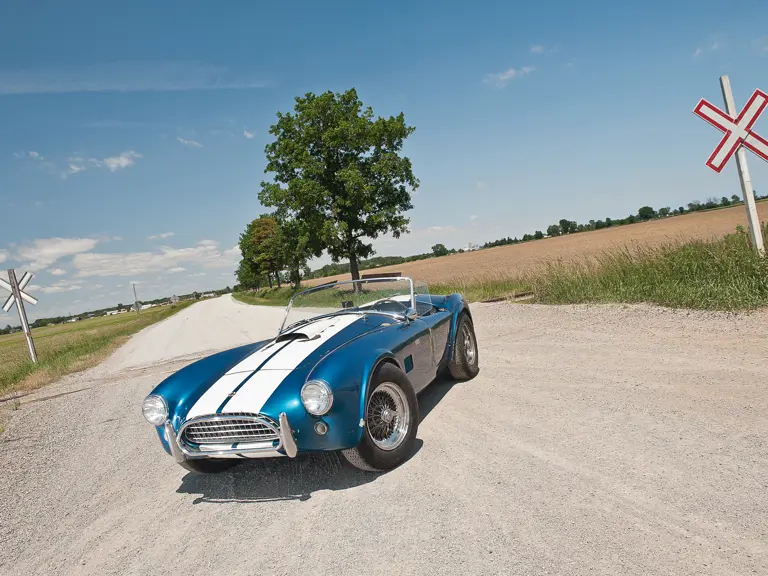
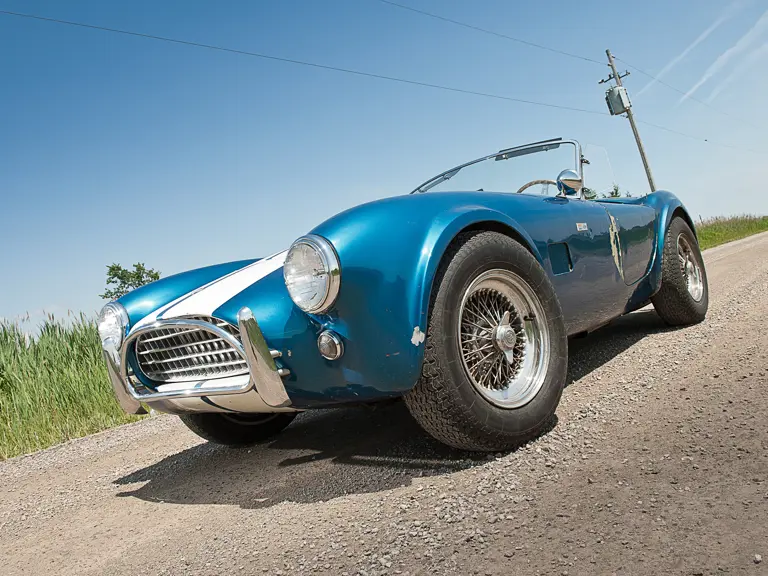
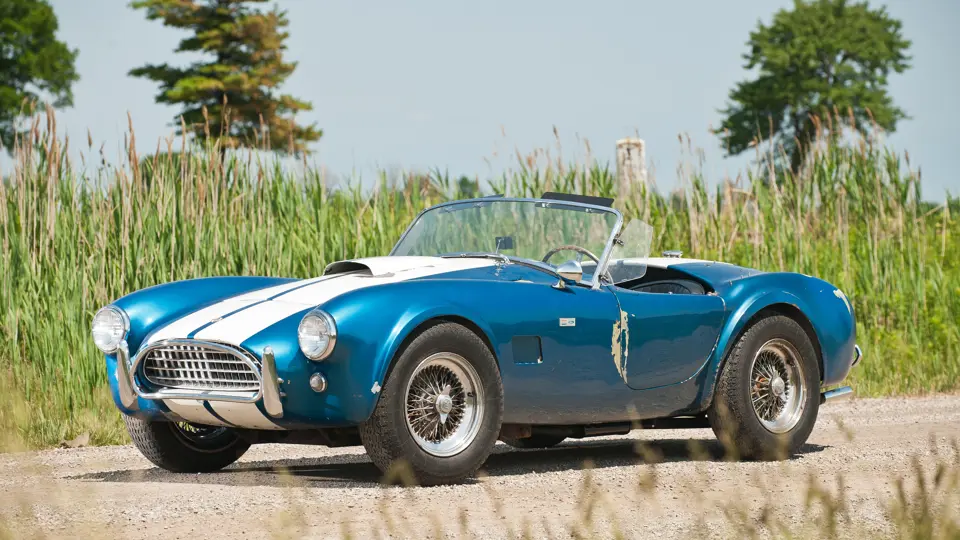
 | Monterey, California
| Monterey, California
